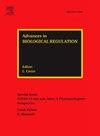The role of glycolytic condensates in the cellular stress response during cancer progression
IF 2.4
Q1 Biochemistry, Genetics and Molecular Biology
引用次数: 0
Abstract
Biomolecular condensates are key organizers of the intracellular environment, which are formed through liquid–liquid phase separation. Glycolytic condensates constitute a subtype of biomolecular condensates that enable compartmentalized ATP production and efficient metabolite channeling under stress conditions. This review explores how stressors, such as hypoxia, glucose deprivation, hyperosmotic stress, and hyperthermia, induce the formation of glycolytic condensates. These stressors are notably prevalent in the tumor microenvironment, where they may support cancer cell survival, metabolic adaptation, and invasion. We discuss the role of scaffold molecules, such as TPM4, F-actin, and RNA, in mediating condensate assembly and stabilization. A deeper understanding of the regulation and function of glycolytic condensates could reveal new vulnerabilities in tumor metabolism and generate strategies to hinder cancer cell adaptation to stress.
糖酵解凝聚物在癌症进展过程中细胞应激反应中的作用
生物分子凝聚体是细胞内环境的关键组织者,是通过液-液相分离形成的。糖酵解凝聚物是生物分子凝聚物的一个亚型,它能够在应激条件下产生区隔化的ATP和有效的代谢物通道。这篇综述探讨了应激源,如缺氧、葡萄糖剥夺、高渗应激和热疗,如何诱导糖酵解凝聚物的形成。这些应激源在肿瘤微环境中非常普遍,它们可能支持癌细胞存活、代谢适应和侵袭。我们讨论了支架分子,如TPM4, f -肌动蛋白和RNA,在调解凝聚物组装和稳定中的作用。更深入地了解糖酵解凝聚物的调控和功能,可以揭示肿瘤代谢的新脆弱性,并产生阻碍癌细胞适应应激的策略。
本文章由计算机程序翻译,如有差异,请以英文原文为准。
求助全文
约1分钟内获得全文
求助全文
来源期刊

Advances in biological regulation
Biochemistry, Genetics and Molecular Biology-Molecular Medicine
CiteScore
8.90
自引率
0.00%
发文量
41
审稿时长
17 days
 求助内容:
求助内容: 应助结果提醒方式:
应助结果提醒方式:


